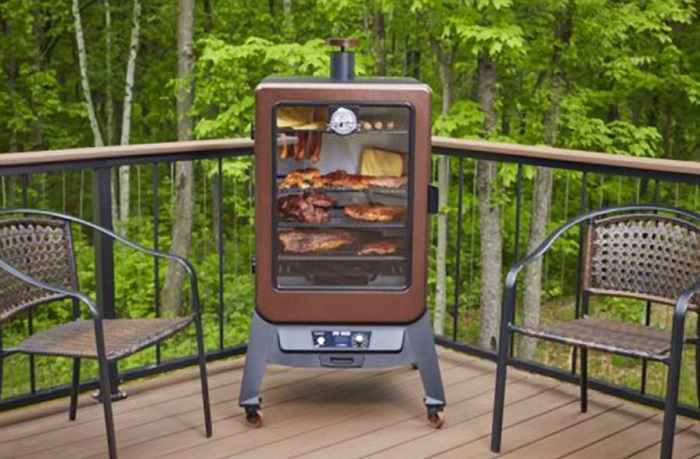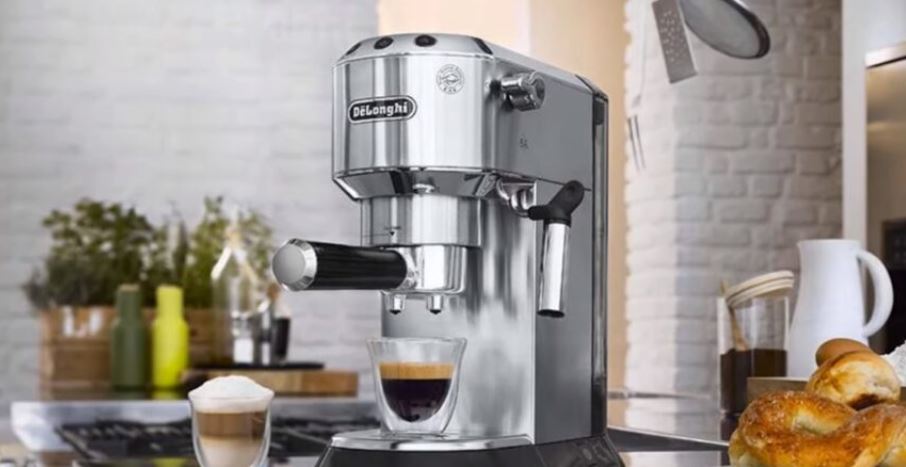Complete Guide On Step By Step How To Clean Espresso Machines
Cleaning the coffee machine is an important step that needs to be done daily, weekly, monthly to ensure the health of the machine and all the drinks made are of the best quality parts to be cleaned and time taken. Below, we will guide you step by step how to clean espresso machines.
Step by Step How to Clean Espresso Machines
Wastewater tray, waste container
These are the parts that store the machine’s waste when making coffee. Therefore, at the end of the day, these parts should be cleaned with plain water to keep the machine clean.
Milk beater or steam faucet
After each milking, steam should be released to push out all the whey remaining inside the spout. If left for a long time, these milk residues will stick to the wall of the faucet, causing the blockage, weakening the steam flow, and creating a bad smell. This step takes 3-5 seconds. When rinsing, pay attention to cover with a towel so that the steam penetrates the towel, clean both inside and outside the milking nozzle.
Milk tank in automatic cappuccino machine
Automatic cappuccino machine Saeco, Gaggia always has a mode to automatically clean the milk nozzle after each brewing. However, the milk container, in addition to being refrigerated, should be thoroughly cleaned at the end of the session to avoid sticking to odors and affecting the milk’s flavor. Clean the bottle with water and a soft cotton pad, rinse thoroughly with warm water.
Every week, it is recommended to clean the milk tank and milk whisk/steam hose with Wega’s specialized cleaning solution. Mix 15ml of the solution with 500ml of cold water into the milking bowl and then put the steam hose in (for coffee machines with included containers, put the mixture straight here). Run the machine with the same solution and then repeat the above step with clean water to filter again. See milk frother cleaner here.
Coffee spout and plumbing
The automatic coffee machine always has an automatic mode of cleaning the coffee spout and internal plumbing at 2 times of opening and shutting the machine with the Stand-By button (pictured above). So, at the end of the day, remember to turn off the machine to activate this cleaning cycle.
Clean up long-standing coffee residue
The press is the heart of the automatic coffee machine, the part directly involved in the coffee extraction process. Therefore, the press must be clean to make the coffee delicious. When buying a coffee machine, pay attention to whether the press is removable.
If it is a removable press (all automatic coffee machines Saeco, Gaggia have this feature), cleaning is as simple as rinsing under the faucet (daily, at the end of use). If the automatic coffee machine cannot be disassembled, the user needs to clean the press with a specialized medicine when the machine says Cleaning or when about 1kg of coffee has been brewed.
For automatic machines with a container for powdered coffee, add 2g of Wega dedicated coffee machine cleaning powder and press to make coffee 5-7 times (5-7 cups). For the machine without a container for powdered coffee, mix 2g of powder into 1 liter in the water tank, make the same coffee. The powder mixed with water goes through the press, and the pipe will clean all the dirt. The special thing about Wega powder is that it does not contain phosphorus, safe for human health. See details of this product here.
Remove calcium for the entire path
In daily broth, there is always a certain amount of minerals, including calcium. Calcium clings to pipes and mortars for a long time, causing blockages in the plumbing system and affecting the taste of extracted drinks. It is necessary to use a specialized calcium remover solution to clean these plaques. Normally, automatic coffee machines always have a calcium removal reminder every 3-6 months. You just need to follow the step-by-step instructions displayed on the control panel of the machine.
Some notes to clean the espresso machine
Read the user manual carefully
Before using any new product, you need to learn how to maximize its effectiveness and avoid damage. With coffee machines, too, you need to ask a consultant for instructions on how to use them, note the points to avoid to increase durability and prolong the machine’s life.
Coffee machines of different brands will have different uses and points to note; if you do not know how to assemble or do not understand the operating mechanism of the machine, do not install it automatically but ask a qualified technician. Most of the causes of machine damage problems are due to improper installation by users.
Clean the machine after use
This is a simple step, easy to perform, but very effective in preserving and improving the machine’s life. After each use, you only need to spend about 5-10 minutes cleaning the machine; the life of the machine will be greatly enhanced compared to those that are not regularly cleaned.
Periodic machine check
To ensure safety and increase the machine’s life, you should periodically check the machine according to the advice of technical experts. This will help you quickly detect early warning signs that the machine is having problems and quickly ensure stable operation and save maintenance costs.
Regular machine maintenance
In addition, users should also note the following:
- If you find that the coffee machine does not work, you should not restart it, but check it carefully. Before turning on the machine, check whether there is enough water in the water tank; absolutely do not operate the machine without water because it will cause the motor to burn.
- Note that only clean water should be used when making coffee. If you do not need to use the machine for a long time, let it run without water to clean it completely before storing it.
- When using a coffee machine, the grinder will break down quickly and stop working after only a few grinds if you use marinated coffees, so only use pure coffee beans or coffee powder, not pure coffee beans seasoning for all types of coffee machines.
- Do not use mineral water or boiled water in the kettle; should use warm water.
- Regularly clean the machine parts such as the waste container, wastewater, cup holder, press jar under running water every day. After washing, the parts must be thoroughly dried and then reassembled.
Why should you clean the machine?
Coffee beans contain a certain amount of oil. Coffee oil plays an important role in creating the crema for an Espresso cup, so it is impossible to have a perfect cup of coffee without the oil. However, coffee oil is very easy to go rancid, so when too much oil is left in the machine, the delicious taste of the coffee will be ruined. In addition, when left for a long time without cleaning, the layer of coffee oil left in the coffee throat will dry out, leading to a blockage of the filter.
Besides, the coffee residue is also a factor worth paying attention to. If not cleaned to remove all the residue, the coffee residue will stick to the filter and cause a blockage. In addition, coffee residue can also cling to the gasket, making the gasket open, leading to cracking and breaking of the rubber gasket after a period of use.
Therefore, cleaning the machine is necessary to ensure the quality of coffee and ensure the machine’s life.
When should the machine be cleaned?
Cleaning of the machine must be done continuously. Yearly, monthly, weekly, daily, and even hourly. Below is a specific machine cleaning schedule so that any user can know how to properly clean the machine.
Hourly
It sounds surprising, but cleaning the machine every hour is necessary because, after only 45 minutes, the coffee oil can be rancid, affecting the product’s taste. So, after one brew, it is necessary to flush the water to remove the coffee oil and the residue from the water filter. In addition, you should also pay attention to cleaning the handle and take the time to scrub the coffee throat after every hour of use so that the coffee quality is always at the best level.
As for the steam wand for whisking milk, it should be cleaned immediately after each use to prevent milk from being sucked back into the water tank and to prevent milk residue from building up on the wand, thereby ensuring hygiene as well as hygiene delicious taste of the next batch of milk
Daily
After a day of use, pay attention to cleaning and scrubbing the main throat, especially the filter mesh. Also, scrub and clean the handle. As for the steam wand, take 15-20 minutes to soak it in a solution of hot water and cleaning powder, then wipe it clean. If milk residue builds up on the steam vent, a paper clip can be used to remove the residue.
Weekly
Cleaning with cleaning powders (such as Caffetto cleaning powder) must be done at least once a week. In addition, soak the handle in water and cleaning powder solution for at least half an hour and scrub it clean. If possible, remove the filter for soaking and cleaning to ensure no oil and coffee residue is left in the machine.
Monthly
Once a month, check the water supply to the machine. Pay special attention to the water filter, and replace it immediately when the filter fails. The filter will help remove impurities and metal elements in the water, help the machine not to scale, and keep the coffee taste pure.
Annual
After one year of use, it is imperative to descale the water in the tank. Because no matter how good your water filter is, the tank can still contain calcium deposits after a long time of use. Calcium deposits not only create a bitter taste for coffee but it also directly affects the durability of the machine.
Conclusion
In summary, although cleaning the machine requires a lot of work, the value it brings is completely worth the effort. A clean espresso machine is not only a machine that can make good coffee but also a machine that can operate stably over the years.





